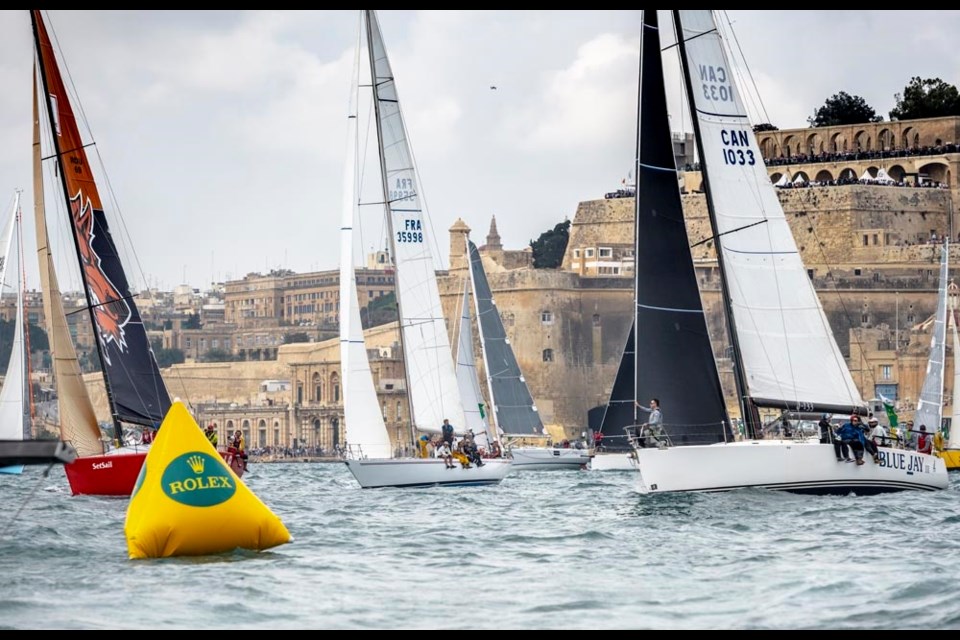ATLANTIC OCEAN – For many in the Bow Valley, pushing their limits in the wild backcountry and up choppy mountains is a tale as old as time.
When you ask Canmore’s Matt Stokes what gets his blood pumping, it’s the challenge of navigating the world’s oceans.
Stokes, a long-time sailor, makes his first start as skipper in the Newport Bermuda Race, the largest and oldest ocean race in North America that goes 1,020 kilometres from Rhode Island to the island paradise, as approximately 220 boats set sail next Friday (June 17).
“It’s a great adventure,” said Stokes. “Off shore sailing is a unique opportunity for amateurs like myself to compete against the best sailors in the world because this is one of the most classic ocean races and all the best sailors in the world are going to be there.”
The classic race started in 1906 by a group of amateur sailors and the tradition has carried on for more than a century by enthusiasts like Stokes.
As skipper, he heads a crew of seven of former national team sailors on his 43-foot racing yacht named Blue Jay. It’s a boat that does everything, but is best-suited for racing.
Blue Jay will be manned around the clock as the crew does four-hour shifts between four people until reaching Bermuda in approximately five days.
Originally from Nova Scotia, Stokes has been around boats his entire life and compared the East Coast lifestyle to parents signing up their children for skiing in the Bow Valley.
The challenge, level of difficulty – and personal payoff – have always attracted Stokes to sailing the vast oceans.
“Why would someone climb one of the mountains around here? In order to do some something like this it’s all the planning and preparation that goes into it,” said Stokes. “It’s a team sport, I’m going to do this with seven of my great friends, and there’s a real sense of accomplishment.”
There’s one big strategic planning point for competitors, which is how they choose to enter and exit the Gulf Stream, which influences the weather from Canada and the United States’ east coast to the west coast of Europe.
“It’s a strong current, probably three or four knots of warm water current going to the east, so it has a really strong effect on the weather and on the waves,” said Stokes. “That’s a big factor in the safety and strategy of this race is how do you navigate the weather in the Gulf Stream on the race route … if you get wind against current, it can be pretty nasty.”
Stokes recalls extremely rough conditions he experienced while skipping in the Mediterranean during the 2017 Rolex Middle Sea Race. The Mistral winds came to life and created chaos and steep waves of three to five metre high that crashed into the boats during the race.
“The conditions were absolutely horrendous,” the skipper said. “We actually had to pull out of the race. That year 70 per cent of the fleet had to abandon the race. It was really dangerous.”
If all the electronics went down on the Blue Jay, the well-versed skipper said he would have no problem in navigating the old fashioned way.
“I would have a handheld GPS and could put a position on to the paper and navigate manually like you would do in the backcountry with a topographic map," he said.
At the conclusion of the race, it’s tradition that crews have a very warm welcome at the destination. There are prizes and awards for participants.
Race organizers will also be digitally tracking every boat throughout the race, which will be live on bermudarace.com.




